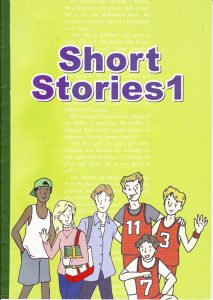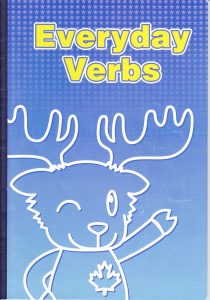Maple Leaf Publishing (Kenny King) has two books that I use a lot in my literate (post-phonics) kids classes: Short Stories 1 and Everyday Verbs.
Approximately the first third of each of these books is devoted to present tense forms; the second third uses present progressive; the last third has past tense. Because of this, the two books are well suited to be used in conjunction with each other. (I should note that while the grammar used in the two books aligns well, the verbs covered in the two books do not.)
SHORT STORIES
 I have developed a twelve-step guide for myself to get optimal benefit from the Short Stories books. For a PDF of the guide, click here: Twelve Steps.
I have developed a twelve-step guide for myself to get optimal benefit from the Short Stories books. For a PDF of the guide, click here: Twelve Steps.
Following these twelve steps ensures that the students will develop their listening, reading, speaking and writing skills as well as vocabulary and grammar.
(Note: Step 10 refers to cloze exercises. These are fill-in-the-blank exercises I have made for myself. It’s easy to make your own if you want to.)
For each class, I print out a copy of a checklist. (Link to checklist PDF: checklist.) This checklist makes it easy for me to keep track of which of the twelve steps I have done with a class for each story.
EVERYDAY VERBS
 The “Everyday Verbs” book is more explicit instruction and practice in grammar. I usually alternate between this and the “Short Stories 1” book (above). For example, after completing story 1 in the Short Stories book, we do pages 2 and 3 from the Everyday Verbs book. (If that is confusing, just look at the checklist. I think it will make sense then.)
The “Everyday Verbs” book is more explicit instruction and practice in grammar. I usually alternate between this and the “Short Stories 1” book (above). For example, after completing story 1 in the Short Stories book, we do pages 2 and 3 from the Everyday Verbs book. (If that is confusing, just look at the checklist. I think it will make sense then.)
So the checklist is a guide to coordinating the use of the two books as well as a way to keep track of which of the twelve steps a class has done in the story books.
Feel free to contact me if you have any questions about any of this!